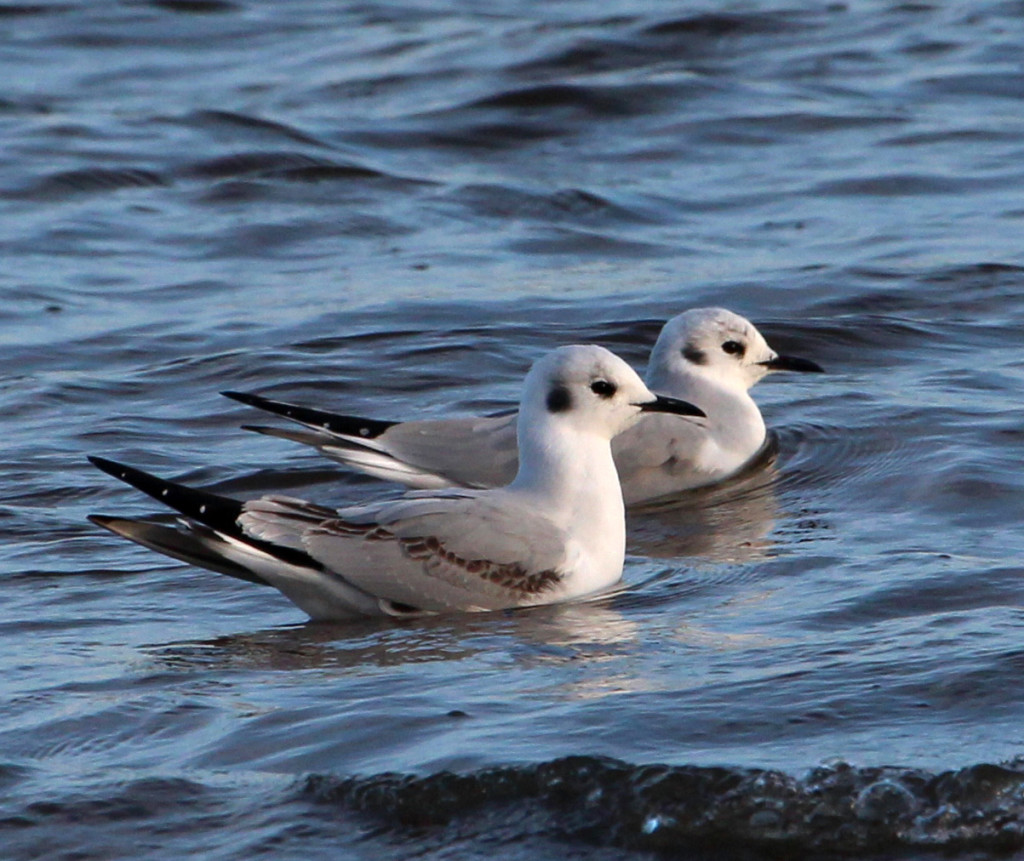
The Bonaparte’s Gull (Larus pheladelphia) was a bird species that snuck up on me. Many years ago, John Newell said something about seeing Bonaparte’s Gulls at one of the city lakes, and my internal reaction was to say “Huh!?” Before that day I am not sure that this species had ever shown up on my personal radar of birds. But the loss had been mine for missing this small gull that “looks delicate and buoyant in flight” (Ken Kaufman, Field Guide to Birds of North America); flight tends to look more tern-like than gull-like.
Here in Oklahoma it is a spring and fall-to-early-winter migrant, so we see them most every year on our Christmas Bird Count. A few have been found overwintering but we have no breeding grounds and not much for wintering grounds in the state. Like the Franklin’s Gull, it is primarily a migrant here. After Bonaparte’s Gulls leave us in winter, most head for the Gulf Coast. Interestingly, in winter it is found along virtually all of both coasts of the contiguous U.S. But it is worth getting to know; some of you will be glad to hear that it is one of the easiest gulls to identify.
The genus name is Larus, from a Greek word that means “a ravenous seabird;” the species name philadelphia is after the Pennsylvania town of Philadelphia, near where the type specimen was collected. The common name Bonaparte is named after a French zoologist who lived for a time in Philadelphia.
In his Field Guide to Birds of North America, Ken Kaufman gives some tips for gull identification: work first with adult plumaged gulls, then back yourself down into the immature plumages. To complicate identification, gulls, especially large gulls, sometimes interbreed. Some gulls take 4-5 years to arrive at full adult plumage, but fortunately the Bonaparte’s Gull only requires a year to reach plumage maturity, and neither the adult or immature plumage is too hard to identify.
The Bonaparte’s Gull, at 13 inches, is the smallest of the American Gulls; the Little Gull of the Old World, at 11 inches, is now nesting in small numbers in the Great Lakes region but the odds of seeing one here in Oklahoma are very slim. Plumage field marks for both adults and young Bonaparte’s are relatively easy—the best field mark being a large white triangle on the leading edge of the upper wing. In young plumage there is also a black subterminal tail band, so with these 2 bits of information, you will be a long way towards identifying this gull species.
This species breeds across much of Canada and Alaska and arrives on the breeding grounds early in the season, while snow still covers much of the ground. It builds a nest that is 4-20 feet up in a fir or spruce tree, and out on a lateral limb a few feet; usually the nest is over or near water. It lays 2-4 eggs, but usually 3 and incubation is 24 days. Egg color is buffy to olive, and spotted or blotched with brown.
Food of the Bonaparte’s Gull is largely insects or small fish, with very little, if any, vegetative component. This may differ from a number of other gull species that we have in winter. These other gull species can often be found at landfills. I have seen Ring-billed, Herring, Franklin’s and Glaucous gulls at these sites, so doing a little “dumpster diving” can be a good way to get looks at a number of gull species—if you can get into the dump area and if you can tolerate the habitat. Landfills are probably a large reason why many gull species are enjoying a boom in population numbers. I have not worked it out but I do not recall seeing Bonaparte’s Gulls in this situation—this possibility probably needs a little sleuthing to answer definitively. Another habitat change over the last 60-80 years is the number of large impoundments that have been built. This almost surely has helped to increase a number of gull species, including the Bonaparte’s Gulls.
